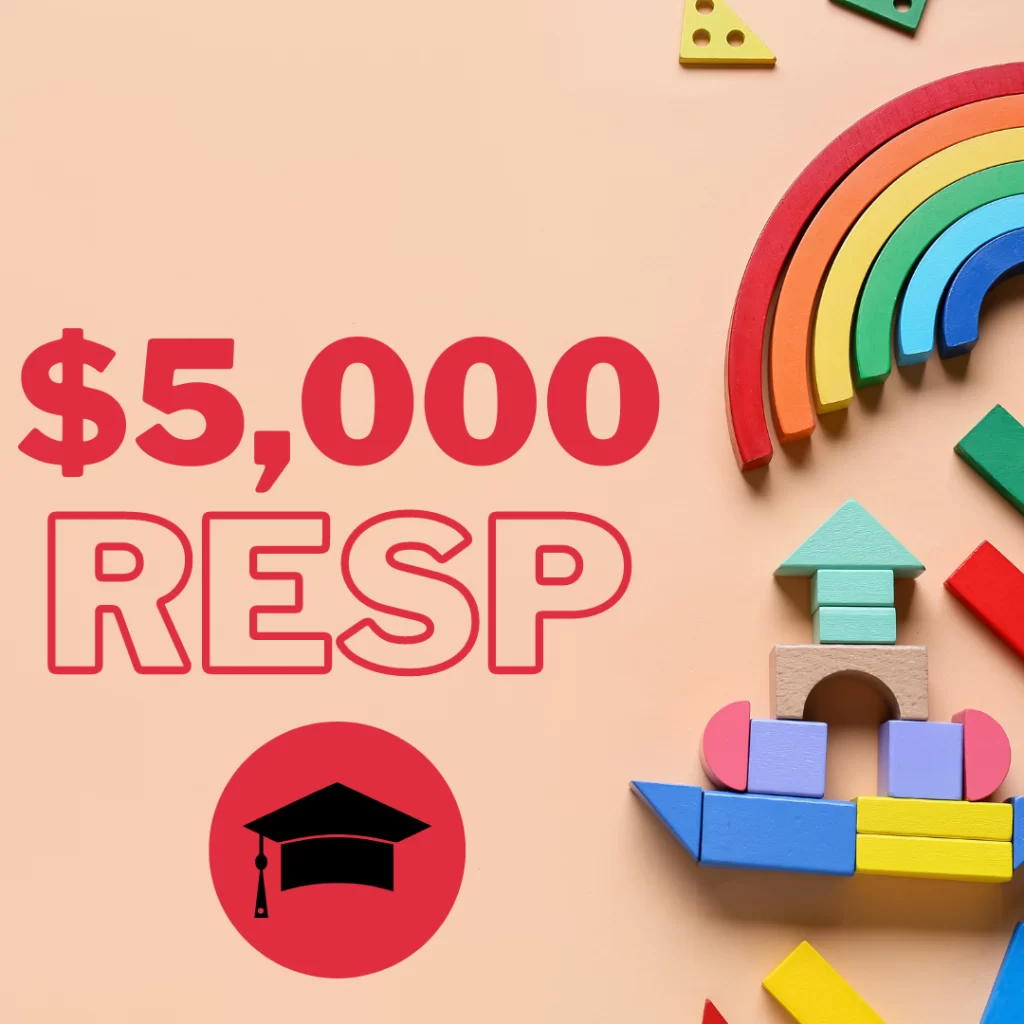What Is an RESP and How Does It Work: RESP Guide
What is an RESP?
What is an RESP and how does it work? Securing a post-secondary education is a major milestone for Canadian families. But with rising education costs, the path to higher education requires careful financial and academic planning. By starting early and making use of programs like the Registered Education Savings Plan (RESP), you can give your child a significant advantage. In this guide, we’ll explore what is an RESP and how does it work, while answering some of the most common questions Canadian families have.

A Registered Education Savings Plan (RESP) is a special investment account that helps families save for their children’s post-secondary education. What makes RESPs so appealing is the support provided by the government, including grants and tax benefits, which can help your savings grow.
The earlier you start, the more your savings can grow through compound interest, government contributions, and tax-sheltered investments. For a comprehensive breakdown, you can learn more from the Government of Canada’s official RESP page.
How Does an RESP Work?
RESPs function similarly to a regular investment account, but with specific advantages for education savings. So how does it work? Contributions to an RESP grow tax-free until the funds are withdrawn for post-secondary education. As the account grows, you’ll benefit from government grants like the Canada Education Savings Grant (CESG) and the Canada Learning Bond (CLB). These programs boost your savings based on your contributions and income level. Want more details on these grants? Visit Canada Learning Bond and Canada Education Savings Grant.
Advantages of Having an RESP

- Government Grants: By opening an RESP, you gain access to grants like CESG (up to $7,200) and CLB (up to $2,000), which significantly increase the funds available for your child’s education.
- Tax-Free Growth: The money inside your RESP grows tax-deferred, meaning it’s not taxed until withdrawn. This lets your savings grow faster compared to a regular investment account.
- Investment Flexibility: You can tailor your RESP by choosing from a variety of investment options, whether conservative (GICs) or growth-oriented (mutual funds).
- Support for All Post-Secondary Options: RESPs can be used for various types of education, including university, college, and vocational training.
Unlock Your Child’s Bright Future with a $5,000 CST RESP
How Much Money Do You Get from an RESP?
The amount in your RESP will vary depending on your contributions and investment growth. However, if you consistently contribute and max out your CESG (where the government matches 20% of your contributions), you can accumulate significant savings. Let’s not forget the power of compound growth over 18 years.
Looking to boost your child’s educational savings? Enter our giveaway on Canadian Parent for a chance to win a $5,000 CST RESP and kickstart their future! Check out our $5,000 Bright Futures Giveaway.
What Happens if Your Child Doesn’t Use the RESP?
If your child decides not to pursue post-secondary education, you have several options:
- Transfer to Another Beneficiary: You can transfer the RESP to a sibling or another qualifying beneficiary.
- Withdraw Contributions: You can withdraw your original contributions without tax penalties.
- Grant Return: Any unused government grants must be returned to the government.
- Close the RESP: If you decide to close the account, the investment income (called Accumulated Income Payments) will be taxed, with an additional 20% penalty, unless it’s transferred to an RRSP.
For more details on unused RESP funds, you can refer to the official RESP guidelines.
Are There Disadvantages to RESPs?
While RESPs offer many benefits, there are a few potential drawbacks:
- Contribution Limits: There’s a lifetime contribution limit of $50,000 per child.
- Government Grant Limits: You only receive government contributions on the first $2,500 you save each year.
- Restrictions on Use: The funds must be used for post-secondary education, or penalties and grant returns apply.
However, with careful planning and an understanding of how the program works, most families can avoid these pitfalls. Reason to know what is an RESP and how does it work.
Academic and Career Preparation Tips
While financial planning is key, academic preparation is just as important. Encourage your child to focus on their studies and explore different career options through job shadowing or discussions with school guidance counselors. This will help them align their academic efforts with their future goals. Many Canadian institutions offer a range of programs, so researching your options early is crucial.
Take Action Today!
Starting early with an RESP is one of the best steps Canadian families can take to secure their child’s educational future. Make regular contributions, stay informed on government programs, and encourage academic excellence to set your child up for success. Explore the details further through the Canada RESP program, and don’t forget to enter our CST RESP giveaway on the Canadian Parent site to give your child a head start on their dreams!
This post is also available in: Français (French)